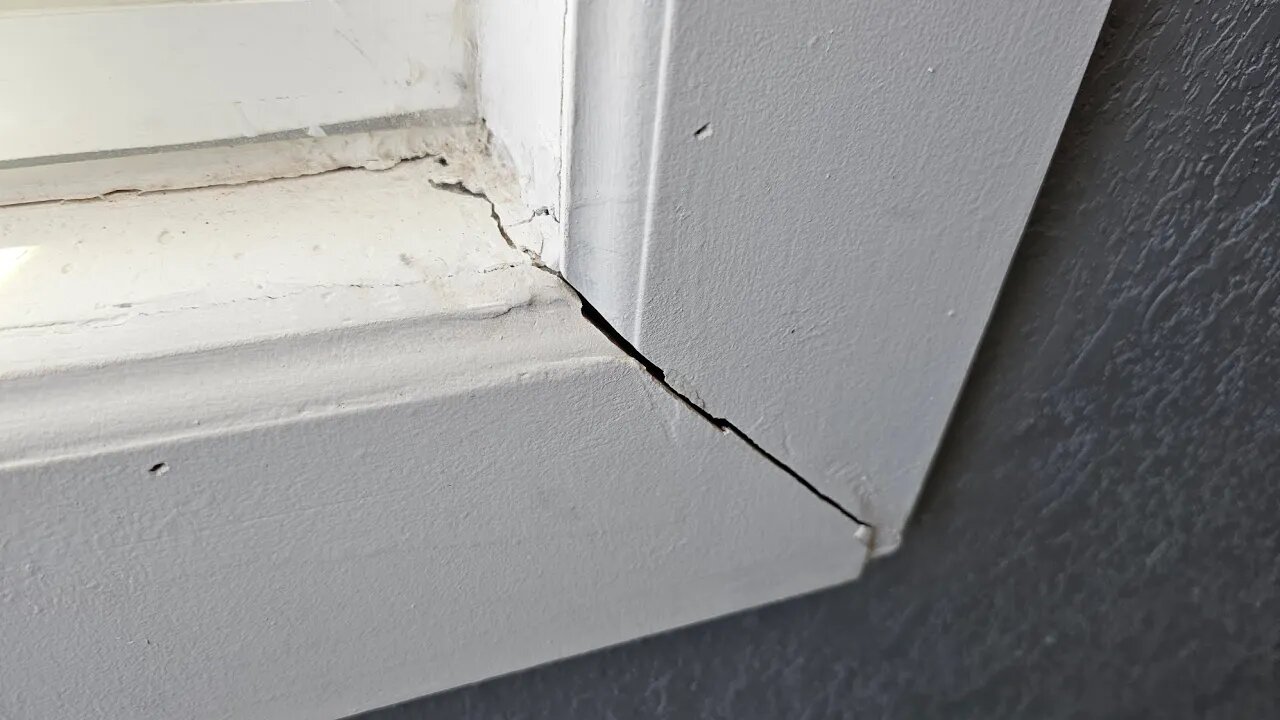Premium Only Content

Signs of structural movement in brick walls after remodel
Signs of structural movement in a brick home can indicate underlying issues that need to be addressed promptly. Here are some common signs to look for:
Step Cracking: This type of cracking often occurs along mortar joints and appears like a staircase pattern. It's a clear indication of settling or shifting in the foundation or structural elements.
Diagonal Cracks: Cracks that appear diagonally across walls can be a sign of foundation movement or soil issues. These cracks often start at corners of windows or doors.
Horizontal Cracks: Horizontal cracks, especially those that run across the middle of walls, could be indicative of excessive pressure from the soil against the foundation or other structural problems.
Widening Cracks: Cracks that continue to widen over time can suggest ongoing movement. This could be due to factors like poor drainage, soil erosion, or foundation problems.
Doors and Windows Misalignment: Difficulty in opening or closing doors and windows, or visible gaps around frames, can be a result of shifting or settling foundations.
Uneven Floors: If you notice sloping or uneven floors, it might be due to foundation settlement or other structural issues.
Bowed Walls: When a wall curves inward or outward, it can be due to pressure from the soil, water damage, or other structural problems.
Cracks in the Foundation: Cracks in the foundation itself can indicate significant structural issues and should be addressed urgently.
The causes of step cracking and other structural movement in brick homes can be attributed to several factors:
Foundation Settlement: Poor soil compaction, changes in soil moisture content, and improper foundation construction can lead to settlement and movement.
Soil Shrinkage and Expansion: Changes in moisture content can cause soil to shrink or expand, putting pressure on the foundation and leading to movement.
Poor Drainage: Improper drainage can cause water to accumulate around the foundation, leading to erosion and potential foundation movement.
Earthquakes: Seismic activity can cause significant structural movement, including cracking in brick homes.
Tree Roots: Large tree roots near the foundation can exert pressure on the structure, leading to movement.
To correct step cracking and other structural movement, it's important to consult with a structural engineer or a qualified professional. The appropriate solution will depend on the underlying cause and severity of the issue. Possible corrective measures might include:
Foundation Repair: Depending on the extent of the issue, foundation repair methods like underpinning, helical piers, or slabjacking may be employed to stabilize the foundation.
Improving Drainage: Addressing drainage issues around the property can help prevent further soil movement. This might involve grading, installing gutters and downspouts, and ensuring proper drainage away from the foundation.
Soil Stabilization: Techniques like soil injection or grouting can stabilize the soil around the foundation and prevent further movement.
Brick Repointing: If the step cracking is due to minor settlement, repointing (replacing deteriorated mortar) might be sufficient to address the issue.
Remember, it's crucial to involve professionals who specialize in foundation and structural repairs to accurately diagnose the problem and recommend the appropriate solution. Ignoring structural issues can lead to more severe and costly problems down the line.
-
 0:52
0:52
Home Inspector Dan
1 year ago $0.01 earnedUnprofessional Roof Repairs Apparent at Home Inspection
32 -
 40:17
40:17
SLS - Street League Skateboarding
4 days agoEVERY 9 CLUB IN FLORIDA! Looking back at SLS Jacksonville 2021 & 2022 - Yuto, Jagger, Sora & more...
84.6K1 -
 2:00:47
2:00:47
PaddysParlorGames
17 hours agoSunday Parlor Chill: GOBSTEIN
56.1K3 -
 LIVE
LIVE
Major League Fishing
4 days agoLIVE! - Bass Pro Tour: Stage 2 - Day 4
153 watching -
 56:24
56:24
Russell Brand
1 day agoEddie Gallagher: War, Betrayal & Fighting the System
117K13 -
 11:21
11:21
TimcastIRL
9 hours agoGOP Rep Says TWO SHOOTERS In JFK Assassination As FBI Uncovers TROVE Of Secret Documents
157K197 -
 1:04:55
1:04:55
Bare Knuckle Fighting Championship
4 days agoBKFC ITALY PRESS CONFERENCE | LIVE!
84.1K7 -
 10:04
10:04
Space Ice
7 hours agoThe Movie Silent Hill Is Like Resident Evil Without The Good Parts - Worst Movie Ever
57.1K12 -
 5:49
5:49
Hannah Barron
1 day agoRedneck Euro Mount
45.8K23 -
 32:34
32:34
hickok45
12 hours agoSunday Shoot-a-Round # 268
35K17